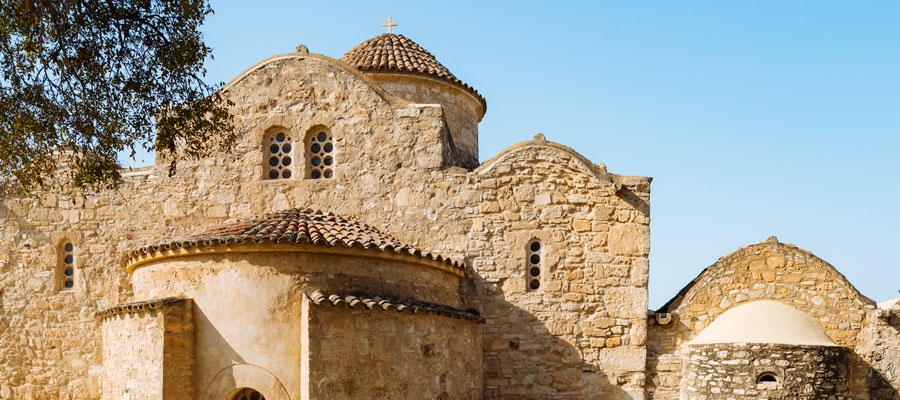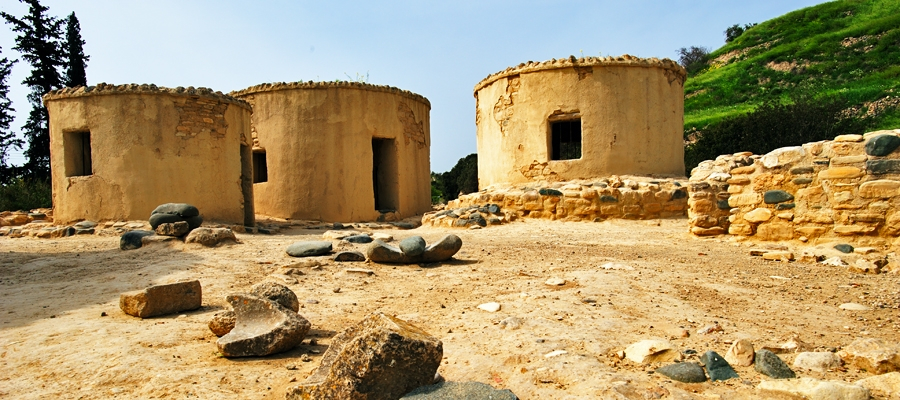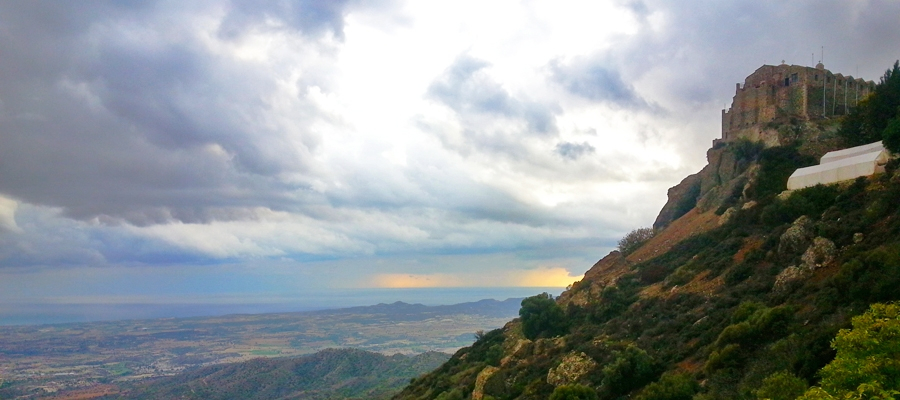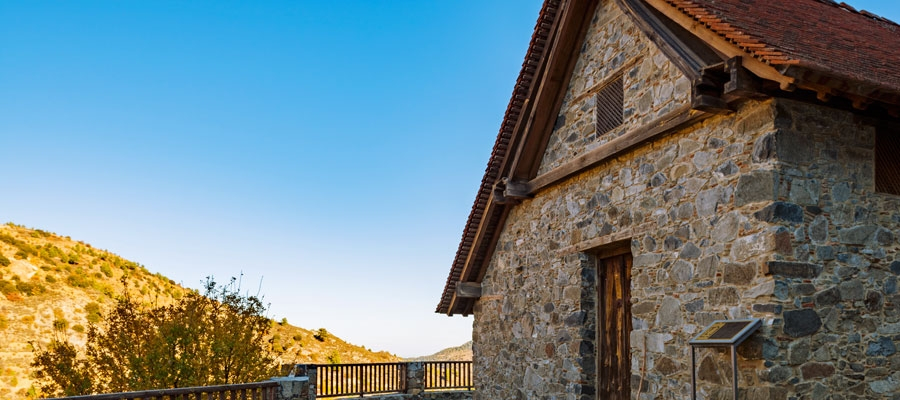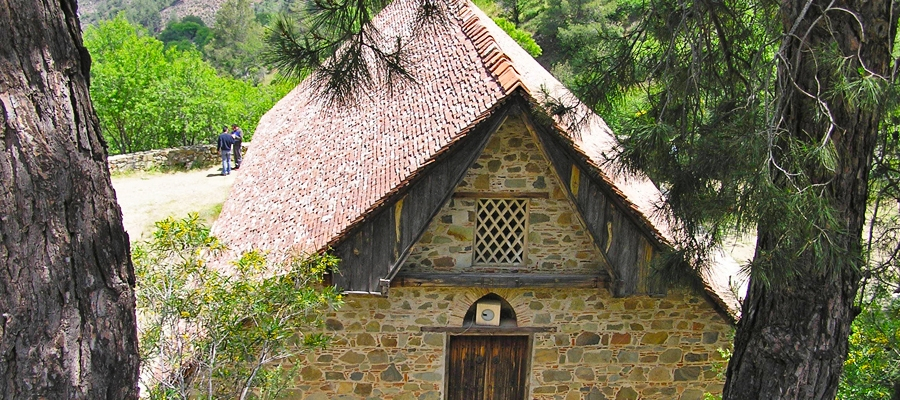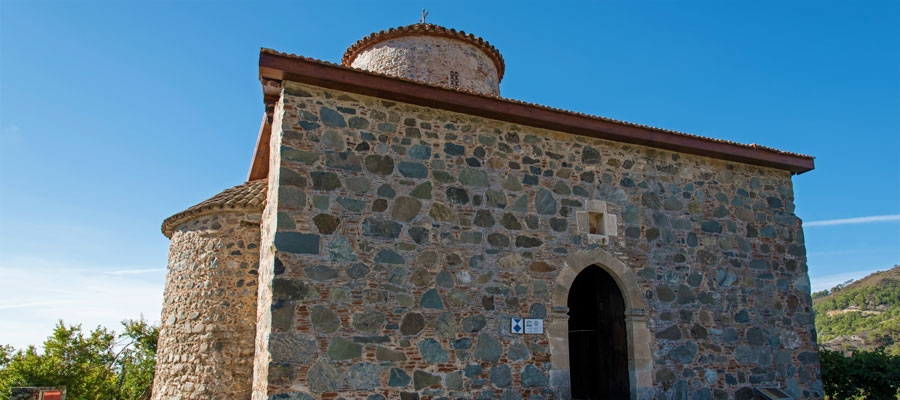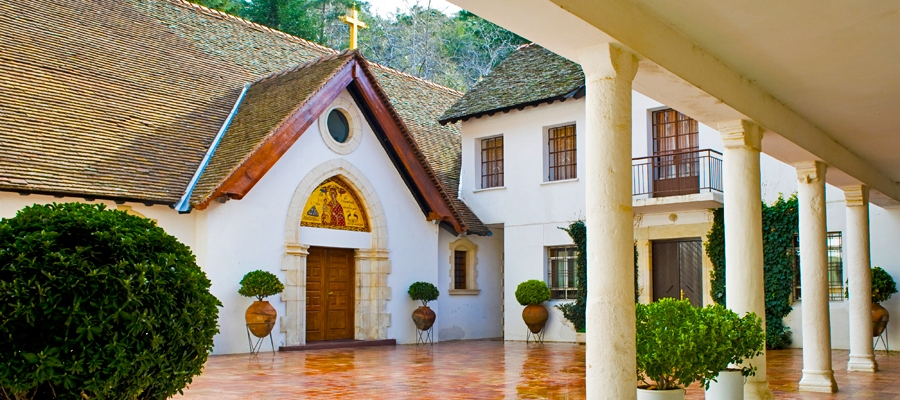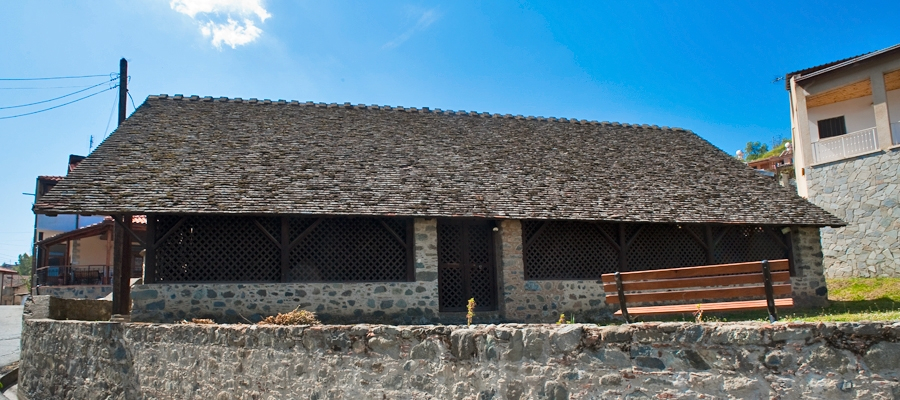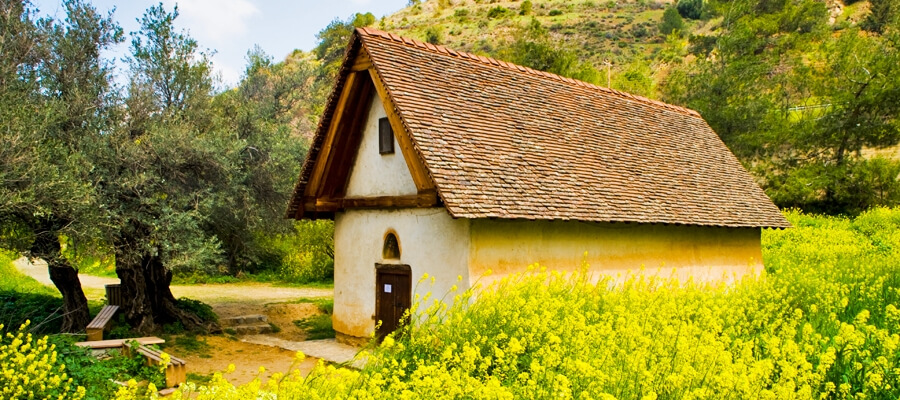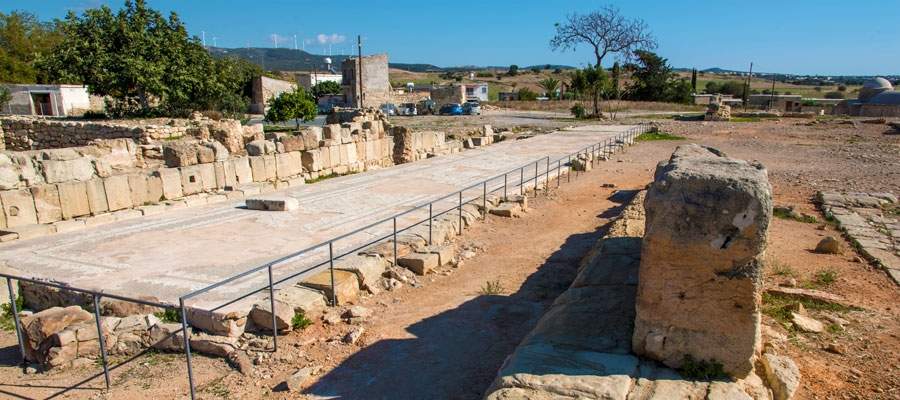This 11th century Byzantine church of Angeloktisti (which means ‘built by angels’ in Greek) was erected over the ruins of an Early Christian basilica of the 5th century.
The original apse of the basilica has survived along with one of the finest pieces of Byzantine art on the island – a rare 6th century mosaic of the Virgin Mary and Child between the two archangels Michael and Gabriel, which rivals the mosaics of Ravenna-Italy. Such mosaics from this period have only been discovered in Cyprus and Mount Sinai.
After the 11th century, additions were made. The Franks added a new facade and bell tower. The sanctuary houses a very old and unique icon of the 10th century, that depicts the Virgin Mary, Saint Lazarus and the Evangelist Loukas. According to legend, the three were family friends and all met in Kition during the island’s first difficult Christian years.
| Region: | Larnaka (Larnaca) |
| Address: | Kiti village, 5km west of Larnaka |
| GPS coordinates: | Lat: 34.847575 Lon: 33.569137 |
| Contact No: | Tel: +357 24 424 646 |
| Operating Hours: |
May – September, Monday – Saturday: 07:00 – 18:00 / Sunday: 09:30 – 18:00 October – April, Monday – Saturday: 07:00 – 16:45 / Sunday: 09:30 – 16:45 |
| Operating Period: |
All year round. Closed on Public Holidays. |
| Entrance Fee: | Free |
| Disabled Access: | Wheelchair accessible. |
| Website: | www.mcw.gov.cy/da |
| Opening and closing times as well as entrance fees, are subject to alterations without notice. Visitors are advised to check before visiting. |

